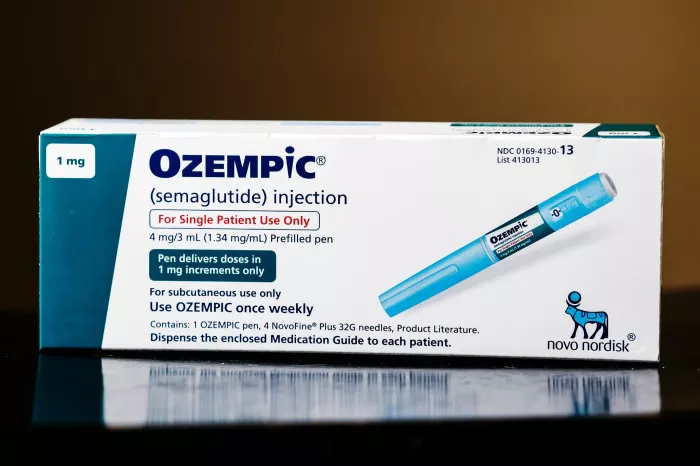Allergies can significantly impact one’s quality of life, and finding the right over-the-counter (OTC) allergy medication is crucial for effective relief. Antihistamines and decongestants are common components of these medications, each playing a distinct role in combating allergy symptoms. In this comprehensive guide, we will delve into the world of allergy medication, exploring the functions of antihistamines and decongestants, comparing popular options like Zyrtec, Allegra, and Claritin, addressing questions about frequency and combining medications, and ultimately assisting you in making informed choices for optimal allergy relief.
Antihistamines and Decongestants Explained
What is an Antihistamine?
Antihistamines are a cornerstone in the realm of allergy relief, countering the effects of histamine, a chemical released by the immune system during an allergic reaction. Histamine is responsible for symptoms like itching, sneezing, and a runny nose. Antihistamines work by blocking histamine receptors, thereby alleviating these bothersome symptoms. Understanding the mechanism of action is crucial in selecting the right antihistamine for individual needs.
What is a Decongestant?
While antihistamines address the histamine-related symptoms, decongestants focus on reducing nasal congestion. Nasal congestion occurs when blood vessels in the nasal passages become inflamed and engorged, leading to that stuffy feeling. Decongestants work by narrowing these blood vessels, promoting drainage and relieving congestion. It’s important to note that decongestants may be available in oral or nasal spray forms, with each having its own set of considerations and potential side effects.
Zyrtec vs. Allegra vs. Claritin: What Kind of Antihistamine to Take?
Choosing the right antihistamine is pivotal in managing allergies effectively. Three popular options in the market—Zyrtec, Allegra, and Claritin—each have distinct characteristics.
Zyrtec: The 24-Hour Solution
Zyrtec, also known as cetirizine, is celebrated for its extended duration of action, providing relief for a full 24 hours with a single dose. This can be advantageous for those seeking consistent and long-lasting relief. However, it’s essential to be aware of potential side effects and interactions, especially in individuals with certain medical conditions.
Allegra: Non-Drowsy and Fast-Acting
Fexofenadine, sold under the brand name Allegra, is renowned for its non-drowsy formula. This makes it an attractive option for individuals who need to remain alert and focused throughout the day. Its fast-acting nature ensures rapid relief from allergy symptoms. Examining the pros and cons of Allegra is vital for those considering this antihistamine.
Claritin: A Staple in Allergy Relief
Loratadine, commonly known as Claritin, is a well-established antihistamine with a reputation for effectiveness in alleviating allergy symptoms. It is often praised for its low incidence of sedation, making it suitable for individuals who may be sensitive to drowsiness caused by other antihistamines. Exploring Claritin’s features and potential interactions is essential for making an informed decision.
How Often Can You Take Allergy Medicine?
Understanding the appropriate frequency for taking allergy medicine is crucial to balancing symptom relief with potential side effects. While OTC allergy medications are generally safe, exceeding recommended dosages can lead to adverse reactions. The frequency of use depends on the specific medication and individual factors.
For Zyrtec, the standard dosage is once daily, preferably at the same time each day. It’s important not to exceed this dosage unless directed by a healthcare professional. Allegra is also typically taken once daily, while Claritin can be taken once or twice a day, depending on the formulation. It’s crucial to adhere to recommended dosages and consult a healthcare provider if there are concerns about the frequency of use.
Can You Take Two Types of Allergy Pills Together?
Combining different types of allergy medications may be necessary for individuals with persistent or severe symptoms. However, it’s crucial to approach combination therapy with caution to avoid potential adverse effects and interactions.
Antihistamines, in particular, should be used judiciously when combining medications. Taking two antihistamines together can increase the risk of side effects such as drowsiness, dizziness, and dry mouth. Decongestants, both oral and nasal spray forms, also require careful consideration, as excessive use can lead to rebound congestion.
Consulting with a healthcare professional is paramount before embarking on combination therapy. They can provide personalized advice based on individual health status, existing medications, and the specific allergy symptoms being addressed.
Innovations in Allergy Medication
While antihistamines and decongestants remain primary players in allergy relief, advancements in allergy medication continue to evolve. Intriguing developments include combination medications that incorporate antihistamines and decongestants in a single formulation, aiming to provide comprehensive symptom relief with convenience.
Additionally, nasal corticosteroids have gained prominence for their effectiveness in addressing nasal congestion and inflammation. These medications work by reducing inflammation in the nasal passages, offering relief from symptoms like congestion, sneezing, and a runny nose. Understanding these innovative options expands the toolkit available for managing allergies effectively.
Conclusion
Navigating the world of over-the-counter allergy medications requires a thoughtful approach, considering individual needs, preferences, and potential interactions. Antihistamines and decongestants play pivotal roles in alleviating allergy symptoms, and the choice between Zyrtec, Allegra, and Claritin depends on factors such as duration of action, sedation risk, and onset of relief.
Equally important is understanding the appropriate frequency of medication use and the potential risks associated with combining different types of allergy pills. By staying informed and consulting with healthcare professionals, individuals can tailor their allergy relief strategy to achieve optimal results while minimizing potential side effects.
As innovations in allergy medication continue to emerge, the landscape of allergy relief is expanding. Whether opting for traditional antihistamines and decongestants or exploring newer options, the key lies in making informed decisions that align with individual health goals and preferences. Allergy sufferers can look forward to a future where relief is not only effective but also tailored to their unique needs.
[inline_related_posts title=”You Might Be Interested In” title_align=”left” style=”list” number=”6″ align=”none” ids=”3452,3449,3420″ by=”categories” orderby=”rand” order=”DESC” hide_thumb=”no” thumb_right=”no” views=”no” date=”yes” grid_columns=”2″ post_type=”” tax=””]
































